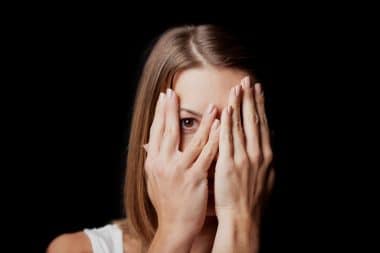Many of us feel down when the weather is grey, cold, or damp, and even worse when it’s all three together. Our spirits perk up though, when the sun shines, the sky is blue, and the air is warm. The sun’s rays feel pleasant on our skin, yet its warmth and light affect us in many more important ways – so important, in fact, that if we get the wrong amount, our bodies are quick to give clear disapproving signals.
Most of us have received these signals at different times in our lives. They come in many forms, such as persistent tiredness, poor concentration, sad feelings, desire to be left alone, little or no appetite, and a general lack of interest. Some of us are unlucky enough to experience many or all of them simultaneously. If that happens at the same time each year, we’re probably suffering from seasonal affective disorder – better known by its rather apt acronym SAD. There are two principal kinds of SAD. The most widespread kind affects people in the winter months and is sometimes called winter depression. The less common kind, sometimes called summer depression, affects people in the summer months.
Doctors are not certain of the causes. In the case of winter SAD, some archaeological evidence points to an ancient evolutionary process that reduced our ancestors’ food requirements during the months when food was scarcest. Whatever the cause, winter SAD is triggered by the seasonal reduction in natural light, which disrupts some people’s circadian rhythm – the internal biological clock that tells us when it’s time to sleep and to wake up. It can also induce a drop in our brain’s serotonin levels and disrupt the body’s melatonin balance. Together, these disruptions can cause depression and sleep disturbance.
Not surprisingly, winter SAD is more prevalent in places distant from the equator – higher latitudes in the northern hemisphere and lower latitudes in the southern hemisphere. According to Melinda Beck in the Wall Street Journal, 6% of the US population suffers from winter SAD. It is thought to be around 8% in Canada and 10% in the UK. In Scandinavia, about 20% of the population suffers from it.
Summer SAD (sometimes referred to as reverse SAD) affects far fewer people – an estimated 1% of the US population. Summer SAD acts on the same metabolic systems as the winter variety, but in roughly the opposite way – the systems react adversely to the increased solar radiation in summer. Any evolutionary angle is unproven and the causes remain unclear. Both versions of SAD are due to people’s systems over- or under-reacting to the sun. SAD tends to run in families, and it affects more women than men, though men usually show more severe symptoms.
Happily, we don’t have to give in to SAD because there’s much we can do to alleviate the problem. To counter the effects of winter SAD, we don’t have to move south. A much more practical and less expensive option is to replace some of the “missing” sunlight by sitting in front of a special kind of light called a daylight simulator light for about 30 minutes each day. According to experts at Columbia University’s Center for Environmental Therapeutics, light therapy works for about 80% of winter SAD sufferers. Many companies that specialize in health products supply these lights; they can also be purchased online. In addition to light therapy for winter SAD, meditation and exercise are recommended for treating both winter and summer SAD. Each is known to help relieve or reduce mild depression. People with more serious depression should, consult their doctor, who in addition to light therapy, exercise and meditation, may prescribe serotonin-boosting anti-depressants.








Reply